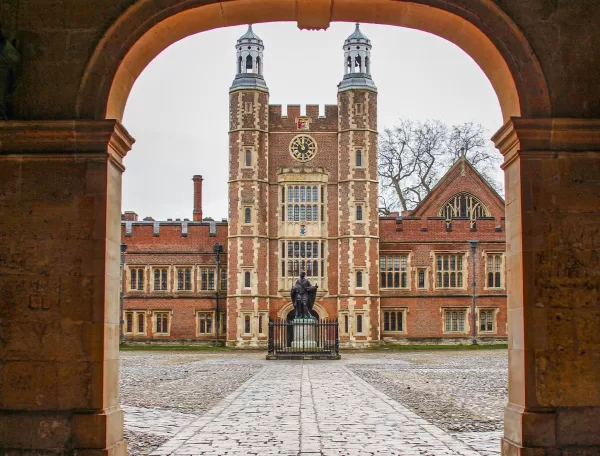Whilst the world has largely been closed for leisure travel this past year, many countries are now beginning to open up again. Travel for work or relocation purposes is very much resuming – especially as businesses shift and pivot out of the pandemic. With this in mind, families with school-age children wishing to relocate will need to be aware of the respective education systems available when resettling. In this article, Quintessentially Education looks at two of the most widely used post-16 UK curriculums – A-levels and the International Baccalaureate (IB Diploma).
The most traditional route for students in the British Education system involves completing GCSEs, followed by the commencement of A-levels at age 16. More than a quarter of a million people sit A-levels in England each year at around 4,500 schools, sixth forms and colleges. By comparison, there are currently 130 IB World Schools in the UK, 60 per cent of which are in the independent sector, most of which offer the Diploma Programme. About 4,500 students in the UK take the Diploma every year. Still, we anticipate that this number will increase as we see continued momentum and popularity across the international audience.
What is the difference between the IB Diploma and A-levels?
A-Levels
A-levels are the most popular national curriculum school-leaving qualifications taken by many students in the UK (and at British schools around the world). Students usually choose three or four subjects to study in-depth, whereas the IB requires a minimum of six subjects with a greater focus on the breadth of study. Grades for A-levels are marked from A* - E, and students also have the option to take the Extended Project Qualification (EPQ), a piece of self-directed research to encourage more critical, reflective and independent learning.
Through this route, students have the option to choose any combination of the three or four subjects they wish to study at this level to best suit their interests and strengths.
IB Diploma
The International Baccalaureate Diploma programme offers a different educational pathway to students aged 16-18. It provides a broad curriculum in which students typically choose at least six subjects (usually three at higher level and three at standard level), picked out of ‘subject groups’ including Languages and Literature (1), Language Acquisition (2), Individuals and Societies (3), Sciences (4), Mathematics (5) and the Arts (6). Students will also take a Theory of Knowledge component to develop critical thinking and a 4,000-word Extended Essay, and a Creativity, Activity and Service element (CAS), which requires student involvement in a range of extra-curricular activities. Each subject is graded on a scale of 1 (minimum) to 7 (maximum), and to pass the IB Diploma, a minimum score of 24 points is required (out of the maximum score of 45 points).
According to the IB’s Mission Statement, the main aim of the IB Diploma is to broaden students’ educational experiences and challenge their application of knowledge and skills. The Theory of Knowledge asks students to reflect on the nature of knowledge and the acquisition of information and learning; Community, Action, Service (CAS) requires students to take part in a range of activities and projects such as music, sports or fundraising; while the Extended Essay is an independent piece of research, culminating in a university-level 4,000-word paper.
The breadth of study in the IB Diploma allows students to keep their future options open while still developing and figuring out their interests. By not closing doors on specific subjects and making decisions too soon, they subsequently have more options when choosing further study at university should they wish. In contrast, those students who choose to study three or four A-levels in depth might feel more limited in their options as to what they can study at university if they have a change of interest or direction later on.
How do the systems compare?
As the IB Diploma offers students a chance to pick from a wide range of subjects, it is considered to benefit students who are ‘all-rounders’. Students choose from a broad range of subjects and consider the links between them within an international context. In comparison, A-levels offer students the chance to focus on three or four subjects, which is more advantageous for students who excel at certain subjects and not others. They do not have to continue with those they find more challenging. The A-level route typically benefits students who already know specifically what they want to do in later life, as it allows for a clear and specific focus. For example, students who wish to study medicine and eventually become a doctor can hone in on sciences and maths without taking less relevant subjects anymore.
In terms of which is considered more difficult, each can be demanding in different ways. Some feel that A-levels can prove particularly challenging if the student decides to choose a complicated aggregate of subjects, such as all essay-based subjects. However, the IB offers such a breadth of combinations. Some students believe that it involves slightly more work due to the range of subjects, the extra-curricular requirements and the extended critical essay. In contrast, the EPQ within the A-level curriculum is optional.
Both curriculums are well respected, and it is essential to note that students should take the path in which they believe they are going to be happiest and most academically successful – e.g., if they are good at the humanities and or English subjects but not as gifted in sciences/maths, then focusing on four critical subjects at A-level, might well be better for them than trying to keep up six subjects across the IB diploma.
Which curriculum translates better internationally?
Families involved in consistent international travel might wish to consider which curriculum would suit better if there was a chance of relocating throughout the two years or aiming to study at an international university. If this is the case, the International Baccalaureate is more widely used across various locations and territories; it is offered by 5,300 schools in 158 countries worldwide and is studied by 1.4 million students. In comparison, the Cambridge International AS and A-Levels are taken in over 130 countries with around 530,000 subject entries each year.
Which system is recognised by international universities?
Both curriculums are recognised as academically rigorous, and therefore both are accepted by the world’s top tier of universities. In the UK, all universities will accept both systems. However, A-levels remain the dominant qualification. Therefore, some people may find the grading requirements more readily understood due to the longevity of the A-levels as a measure for entrance. That being said, IB scores will now be listed on almost every UK university’s entrance requirements section, secondary only to A-levels and incomparable to any other education system from another territory.
Similarly, US universities also accept A-levels and the IB Diploma. However, the IB diploma is more naturally tailored towards the American university system in which students often choose to study a range of subjects rather than immediately specifying, later deciding to major in a specific subject. The breadth of the IB curriculum and the requirement to keep up subjects across sciences, humanities, and mathematics correlate positively with the traditional ‘liberal arts’ approach that is widely seen in US universities. By contrast, some A-level students who commence university in the US may be required to take additional credits or modules to catch up on components that weren’t studied at A-level, but that will now be required at the undergraduate level. Therefore, students must factor in where they might want to study at the university level before deciding which curriculum they should take.
If you and your family are considering relocating internationally or choosing between these two education curriculums, please do not hesitate to contact Quintessentially Education, who can answer any questions or queries you may have.

















